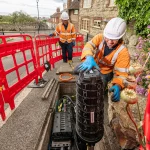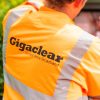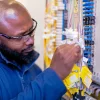Aberdeen University Study Highlights UK Rural vs Urban Broadband Digital Divide
The digital divide between UK rural and urban areas is not a new or unfamiliar problem, although a new study from academics at Aberdeen University in Scotland has warned that the issue “will persist for the foreseeable future,” unless public policy does more to embrace alternative network providers.
The research notes that a “sizeable minority cannot engage in online activity considered to be ‘normal’ and increasingly expected of private citizens” by the Government, commercial customers, suppliers, retailers and utility firms, which it says is “largely due to inadequate infrastructure“. So far, so obvious, but then the whole report touches on familiar topics.
The study goes on to note that broadband take-up rates vary little across urban and rural Britain “suggesting that rural households and businesses are as likely as any others to want to be part of a digital society,” although the problem has never been one of take-up. Fewer people live in rural areas and the communities tend to be fairly sparse, which makes it much harder to develop a commercially viable model without lots of public funding.
Advertisement
Unsurprisingly the study expects that these territorial divides will persist for the foreseeable future, and “may become more pronounced” as private sector service providers prioritise new investments in profitable (urban) markets (e.g. DOCSIS 3.1, G.fast, FTTP/H etc.), while public-sector interventions will “fail to bring superfast broadband to all“.
As a solution the study vaguely calls for the policy towards rural areas to benefit from “digital future proofing,” which highlights a general call for related infrastructure to be easily upgradable as requirements grow. On top of that it suggests that any solution will almost certainly involve deploying a number of different connectivity methods.
Extract from the Aberdeen University Study
These, we suggest, will include some or all of the following: non-fixed connection via satellite or wireless, particularly for the especially ‘hard-to-reach’ or ‘final few’ users; community-led initiatives which should be considered more systematically in public policy, especially in terms of financial and technical models most suited to local geographies and the socio-technical capacities of individual communities; and re-scoping potential models for collaboration between commercial service providers and the public sector (through public finance and/or provision of in-kind expertise).
Foreseeable technical developments could help to improve Internet use for those currently under- or poorly-serviced by their broadband connection, such as progressive compression of web content, selective display of ‘wanted’ functions on websites (such as actual processes on booking sites) and suppression of ‘unwanted’ functions such as videos.
Increased satellite coverage, already in progress, could if suitably priced (possibly involving the public sector to support costs) provide wider territorial coverage as well as increasing connection speeds.
Much of what the study proposes is already happening, with the Government’s Broadband Delivery UK programme having recently become much more accepting of alternative network providers, such as Gigaclear (FTTH/P) or Airband (fixed wireless) etc. The report also praises community efforts, such as B4RN (i.e. 1Gbps FTTH that is built and funded by communities and private investment), and calls for such projects to receive more support.
One oddity is the point about “foreseeable technical developments,” such as “progressive compression of web content“. Compression is nothing new (e.g. Turbo Mode in the Opera browser), although its benefits on all but the slowest of connections tend to be limited.
Advertisement
We’re also not quite sure what they mean by “suppression of ‘unwanted’ functions such as videos“, particularly since online video content and services are hugely popular (i.e. any solution that restricts those won’t be very attractive to modern consumers).
Elsewhere we suspect that the recommendation to use Satellite will go down like a lead balloon, although the academics do admit that slow latency times and meagre usage allowances tend to hinder the technology. “If these limitations of satellite broadband could be overcome [then it] could offer Internet access on a par with fixed broadband infrastructure,” claims the study.
However there is one rather significant problem with the basis for many of the report’s positions, it’s all based on data that is woefully out of date. The data used in this study has been plucked from Ofcom and various other sources, but most it comes from 2013-2015 and some is even extracted from as far back as 2012; that’s positively Stone Age.
At present it’s estimated that BDUK has helped to make fixed line “superfast broadband” (24Mbps+) networks available to order by 93%+ of UK premises and this should rise to 95% by around the end of 2017 or early 2018. After that it’s likely that clawback and savings from early contracts could help to push related coverage to 97% by 2020 and the 10Mbps+ USO would then tackle the rest (note: around 0.3% may still be left with no option except Satellite).
Advertisement
In practice this means that the UK could achieve almost universal coverage of superfast broadband by around 2021-22, although a fair number of the related deployments in rural areas may not be particularly “future proof“. One long-term solution would be to bring optical fibre (FTTH/P) to every property but that would take a huge public investment and many years to build. The Government doesn’t appear to have much appetite for that.
Mark is a professional technology writer, IT consultant and computer engineer from Dorset (England), he also founded ISPreview in 1999 and enjoys analysing the latest telecoms and broadband developments. Find me on X (Twitter), Mastodon, Facebook, BlueSky, Threads.net and Linkedin.
« 330Mbps G.fast Pods Appearing in Broadband Delivery UK Areas Too

















































Comments are closed